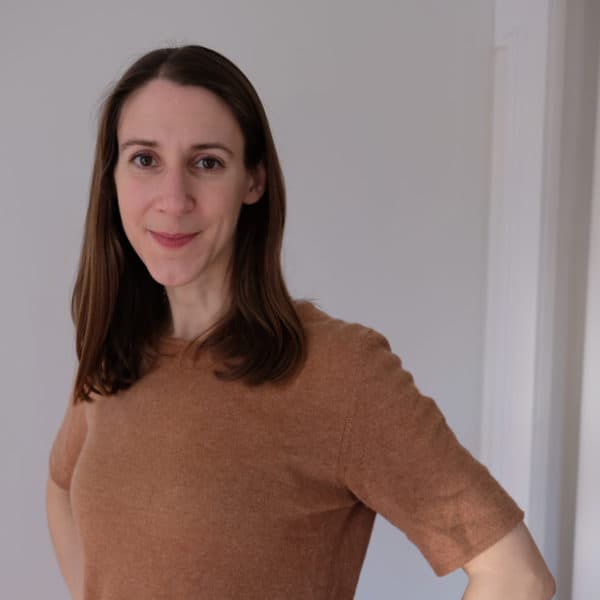Advertisement
Spring Art Guide
10 art exhibits to check out this spring
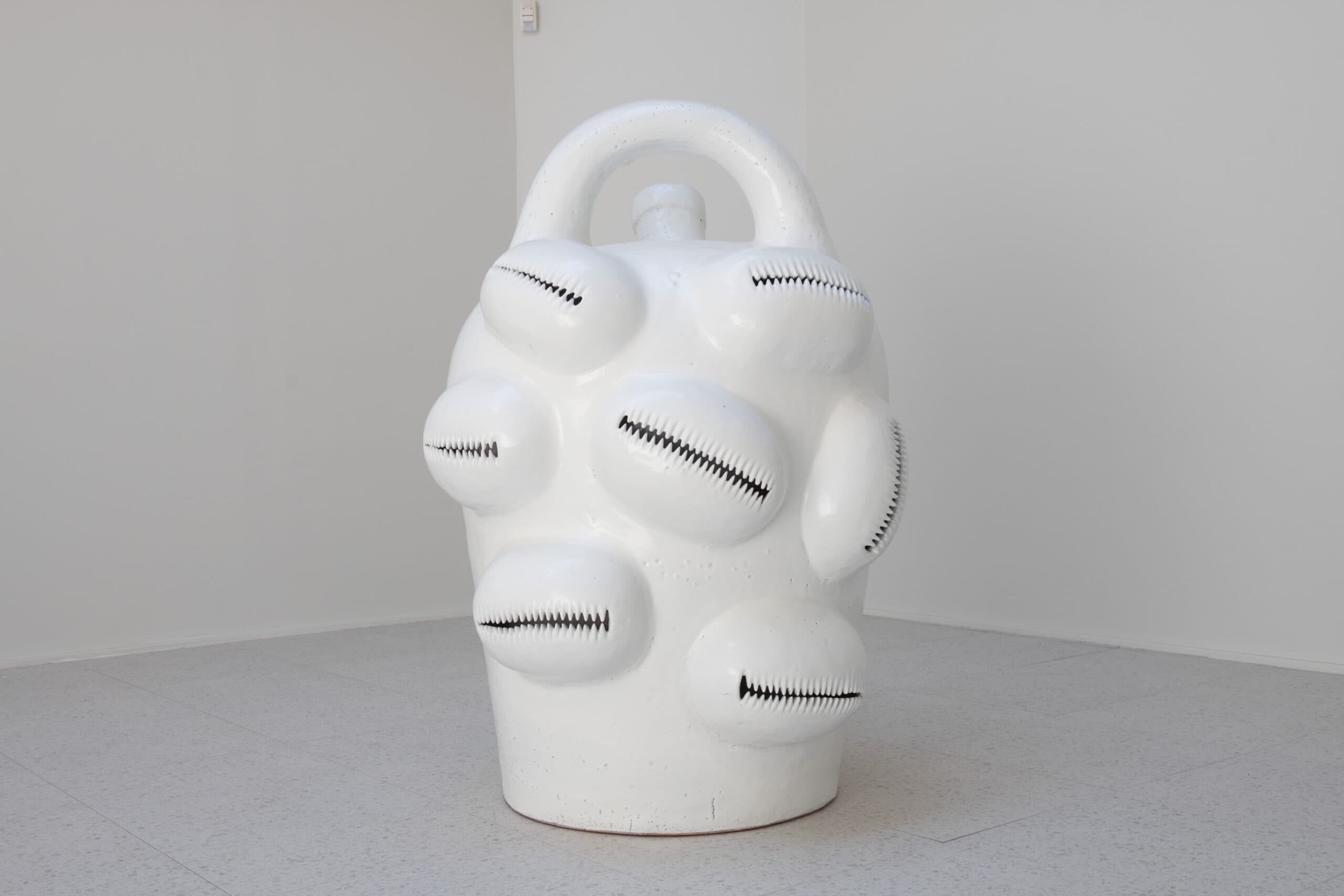
Two shows make a dazzling pair this spring — think of it as the art stars aligning for Greater Boston. First, there is the recently-opened exhibition featuring the work of 19th-century enslaved Black potters at the MFA ( which we highlighted in our winter arts guide ). WBUR’s Pam Reynolds described it this way: “Within the brutal barbarity of slavery, and despite harsh conditions and back-breaking labor, enslaved artisans managed to create objects that were not only utilitarian kitchen necessities — the Tupperware of their day — but also objects of superior craftsmanship, notable artistry and even transcendent beauty.”
Then, coming to the ICA is the overdue survey exhibition of work by Simone Leigh. She has focused on large-scale ceramic sculptures over the course of her career, sometimes at the expense of drawing broad attention to her work. (The art world has had a tendency to dismiss ceramicists as mere artisans. Insert eye roll emoji.) Like the work of the Old Edgefield potters at the MFA, Leigh’s work conveys a sense of strength and the need for a hard shell in a complicated world. But under that, you feel her deep thoughtfulness and tenderness toward Black womanhood.
See both shows this season, and consider them in conversation with one another.
'
Jace Clayton: They Are Part
'
MAAM
Through July 30
“Everyone has this world of sound at their fingertips,” says artist, writer and DJ Jace Clayton, and he has harnessed precisely that for his new exhibit. One of his sculptures invites museum visitors to step inside a ring of 40 standing speakers and play a song from their phone. An algorithm created by Clayton takes those sounds and lets them bounce among the speakers, rising and falling. As WBUR’s Andrea Shea describes it, Clayton is “making familiar sounds unfamiliar,” thus turning each song choice into a surprise.

'
Rachel Hayes: Transcending Space
'
Fruitlands Museum
Until March 1, 2024
The main gallery of the Fruitlands Museum is newly awash in vibrant color in the form of Rachel Hayes’s large-scale textile installations. Hayes takes repurposed panels of nylon, polyester and cotton fabrics to create contemporary patchwork assemblages. Her unfinished edges embrace the imperfections of handcrafted work. A few years ago, Hayes’ installations caught the eye of Angela Missoni, heir to the Italian fashion label famous for its bright zigzag patterns. Missoni commissioned Hayes to create a canopy that billowed over a spring runway show. In June, the museum will install additional works by Hayes outside, where they’ll ripple in the wind and glow in the natural light.
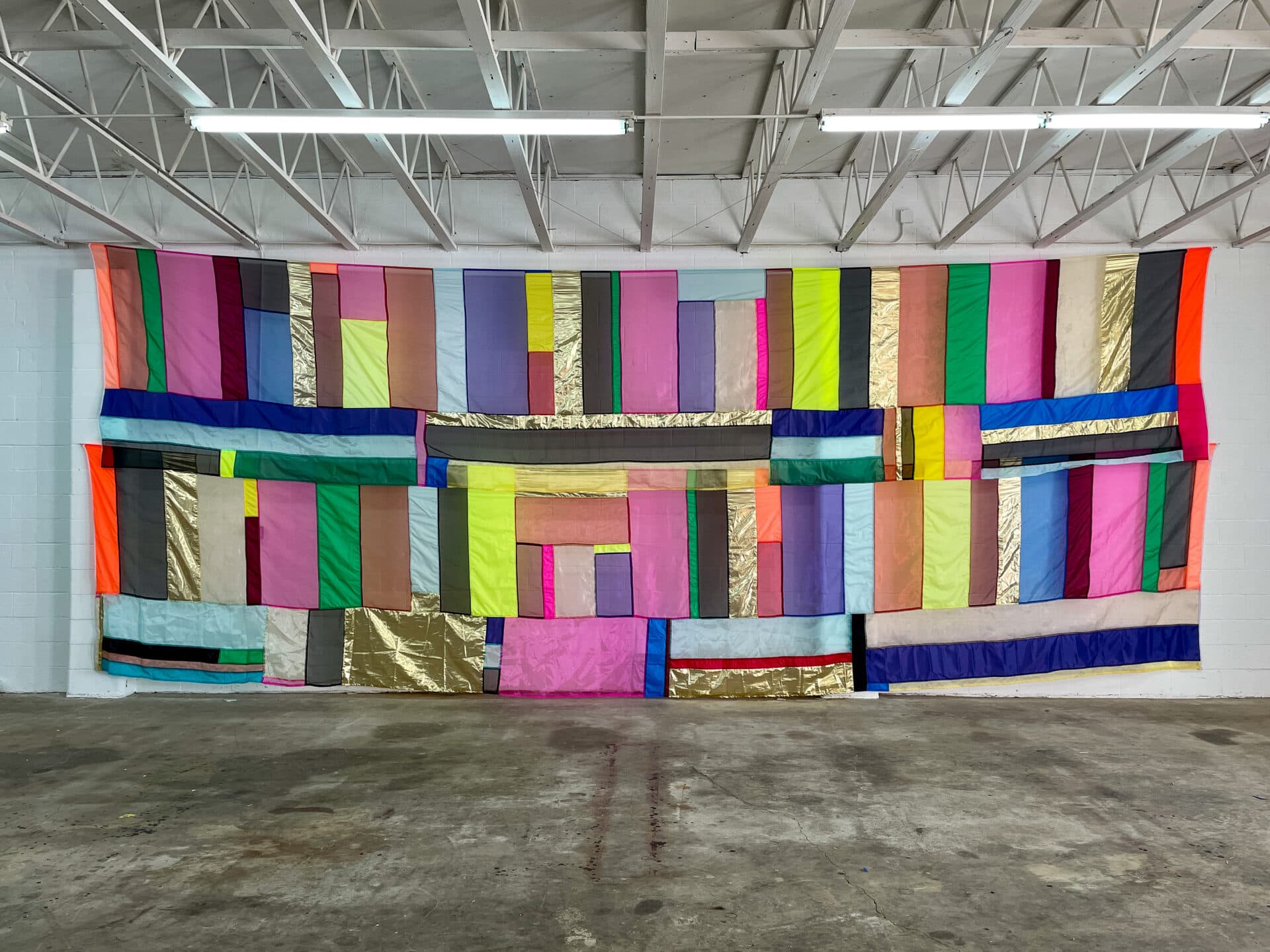
'
This Unique Place: Paintings & Drawings by Jeff Weaver
'
Cape Ann Museum
Through June 4
Coming this summer, the Cape Ann Museum will exhibit work by iconic American realist Edward Hopper , who, over the course of several summers, painted scenes of Gloucester and the surrounding area. (That show opens in July.) Gloucester artist Jeff Weaver, who has lived in the city since the 1970s, shares a similar vernacular to Hopper’s — his paintings also capture lone, grand structures, sometimes in decay, bathed in luminous light. Weaver says he likes to paint scenes that go unnoticed, and his paintings demonstrate the beauty he finds in shuttered and weather-battered buildings.
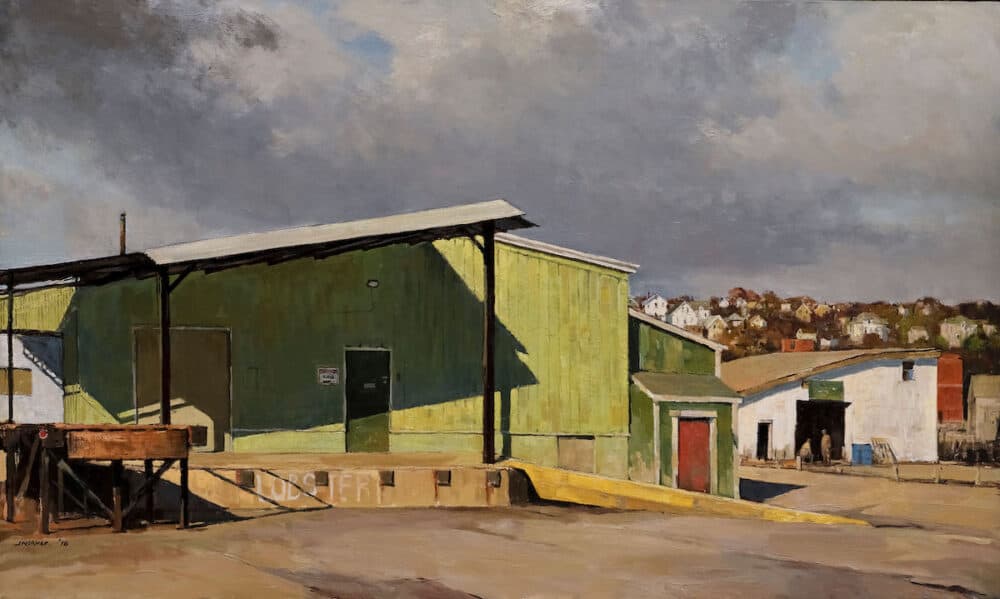
'
Hokusai: Inspiration and Influence
'
MFA Boston
March 26 - July 16
The work of Japanese printmaker extraordinaire Katsushika Hokusai (1760–1849) may be ubiquitous — just think of that big blue wave — but the MFA is putting a new spin on his work with a show that traces his influence on generations of artists across the world. The Japanese name for the woodblock prints, Ukiyo-e, means “pictures of the floating world,” and they depicted life in contemporary Japan when they were printed. Cheap to produce, artists like Hokusai created endless motifs of landscapes, fashionable actors and folktales. More than 100 of Hokusai’s woodblock prints, taken from the MFA’s notable collection of Japanese art, anchor the exhibit. Another 200 artworks by Hokusai’s admirers build on his influence, with notable pictures by Helen Frankenthaler and Francesco Clemente.
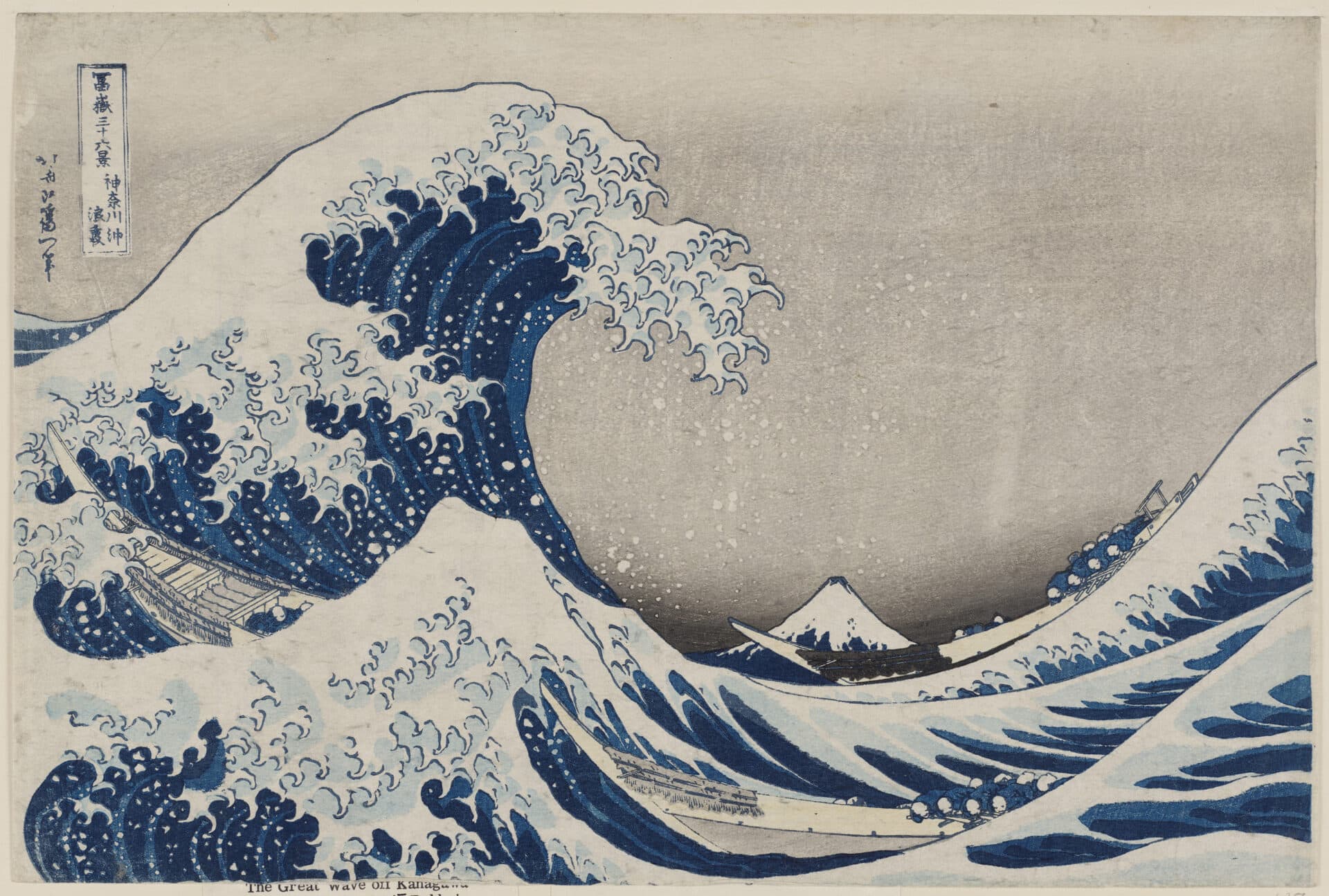
'
From the Andes to the Caribbean: American Art from the Spanish Empire
'
Harvard Art Museums
Through July 30
Before England and France colonized North America, Spain’s empire made its fortune in the Americas, beginning with the arrival of Columbus in 1492. Over the next three and a half centuries, the Spanish left behind a distinct visual legacy, explored in this show of religious and secular art. Paintings, like that of the Virgin Mary by Juan Pedro López, show how an American-born artist absorbed a Spanish aesthetic.

'
Gu Wenda: United Nations
'
Peabody Essex Museum
April 1-Nov. 5
At first glance, Gu Wenda’s work looks like countless murmurations — clouds of black birds in flight, twisting and swooping in unison. On closer inspection, you see he’s rendered the flags of UN member nations in black and white. And if you look very closely, you see Gu has used human hair. The Chinese-born artist collected hair from groups all over the world, which he uses in his art as a way to unite people of different cultures.
-Full-JPG-1920x1440.jpg)
'
Sung Tieu: Civic Floor
'
MIT List Visual Arts Center
April 4-July 16
Artist Sung Tieu probes the insidious nature of bureaucracy in her work, and how, at its darkest, it leaves people powerless and in a state of hyper-surveillance. Her installations, which are often visually spare but deeply researched, have examined the psychological impacts of the Cold War and the mystery surrounding the “Havana Syndrome” attacks. Tieu was born in Vietnam, but immigrated to Berlin as a child, not long after Germany’s reunification. The List Visual Arts Center, in tandem with two other institutions, has co-commissioned “Civic Floor,” a multimedia exhibition that considers detention spaces and the often ignored perspective of asylum-seekers.
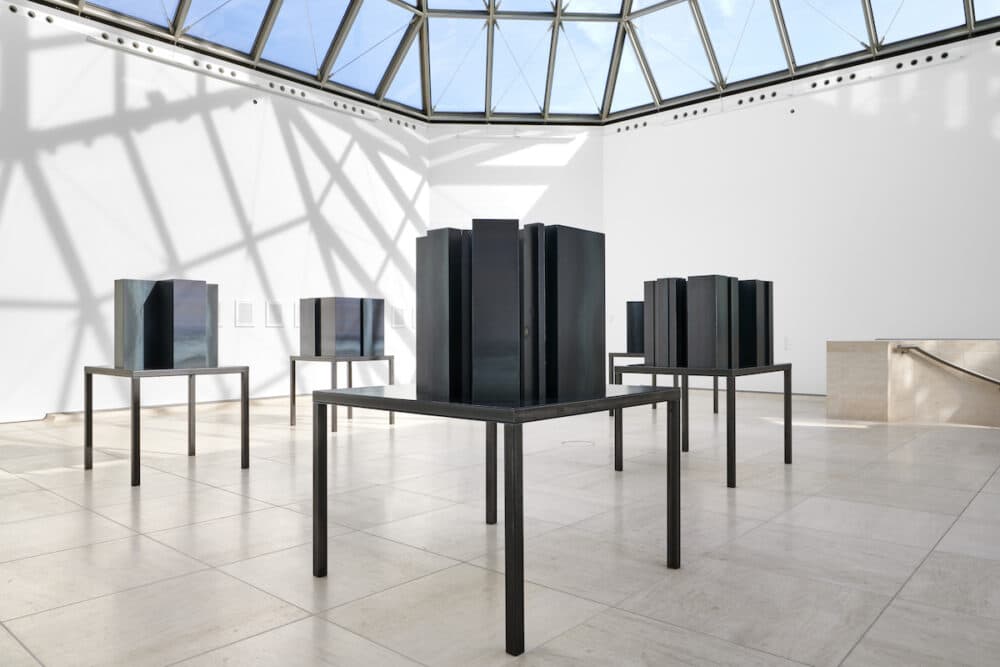
'
Simone Leigh
'
ICA Boston
April 6-Sept. 4
Fresh off being the first Black female artist to represent the United States at the Venice Biennale last year , Simone Leigh’s museum survey exhibition finally opens at the ICA before traveling to Washington, D.C., and Los Angeles. Leigh’s striking, often minimalistic, forms embody her rigorous intellect. For decades, she has considered the influences of colonialism, and she has sought to manifest Black feminism, selfhood and agency. The ICA show focuses on Leigh’s sculptures in bronze and ceramic, but also includes video art and a suspended installation. The 24-foot sculpture Leigh created to stand before the U.S. pavilion at the Biennale will be installed outside the ICA.
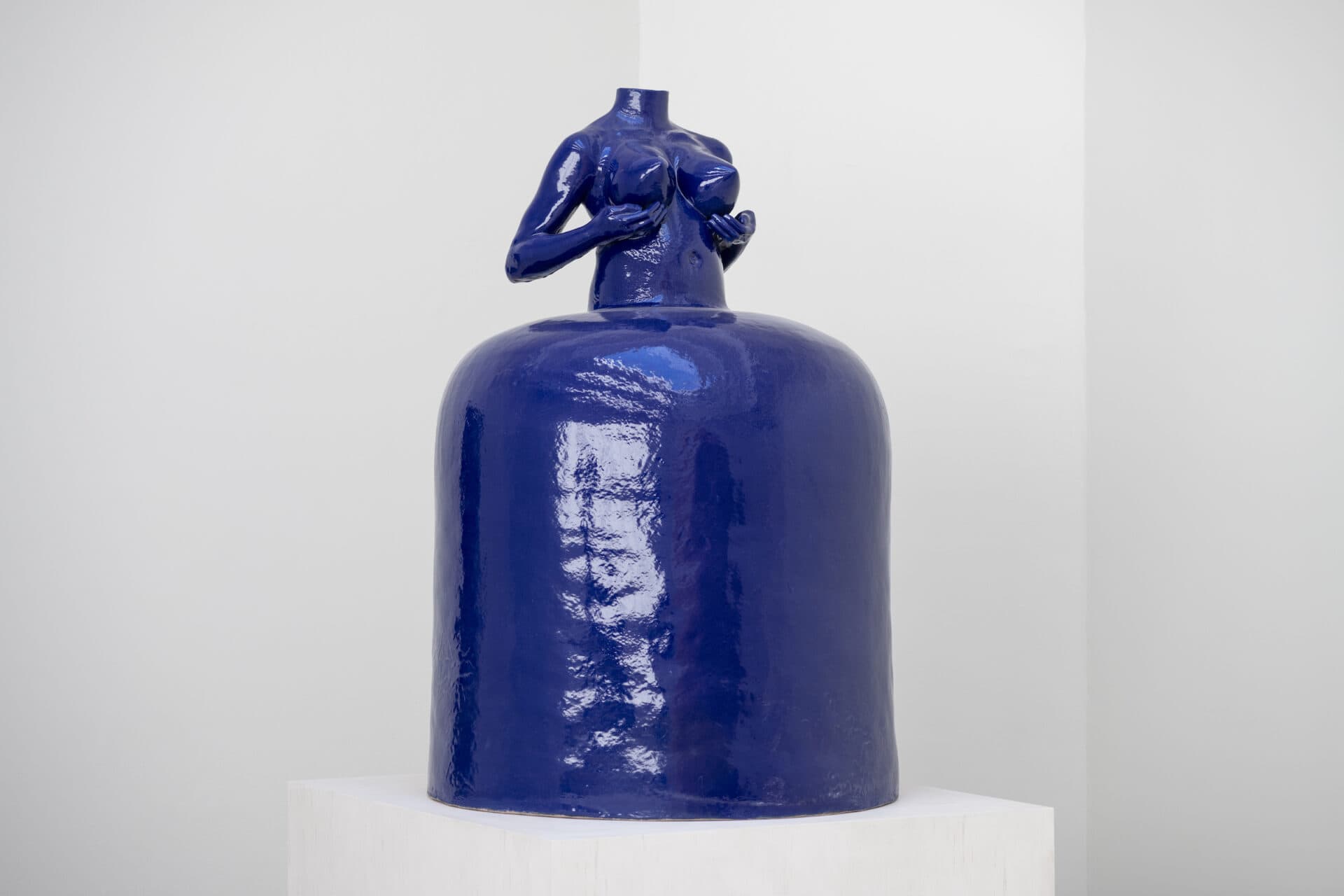
'
Agano Machiko: Untitled
'
Smith College Museum of Art
Through May 2023
The abstract sculptures of Agano Machiko mimic the taut movements of ballet dancers, with points anchored from floor to ceiling — you can practically feel them stretch. The Japanese artist trained as a weaver, but in the 1990s she started knitting fishing line and steel wire on oversized needles. Agano coated parts of the installation in kozo mulberry pulp, which gives the illusion that points of the work are disintegrating into the air.
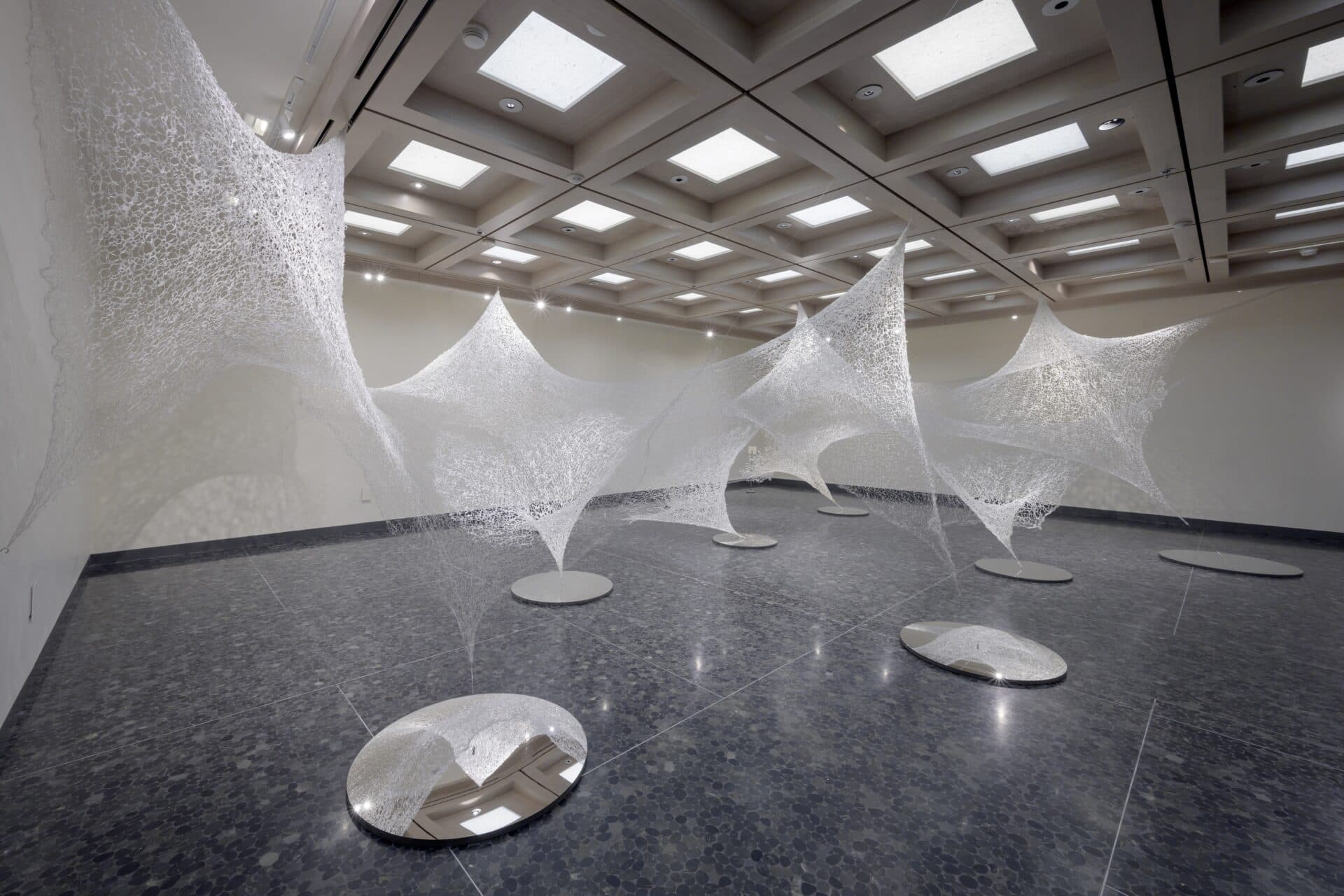
'
Material Mapping: Data-driven Sculpture by Adrien Segal and Norwood Viviano
'
Fuller Craft Museum
May 13-March 3, 2024
The work of Andrien Segal and Norwood Viviano does more than respond to the world around them. The artists interpret the environment using sets of data, frequently charting the impact humans have on the surface of the earth. Segal, who is based in Oakland, California, drew on research maps from the USGS Oregon Water Science Center to create a physical representation of an Oregon river to show how its path changed over a decade and a half. Viviano, who has also used maps to inform his sculptures, does so through the lens of population and shifts in industry to create multidimensional sculptures of cities.

